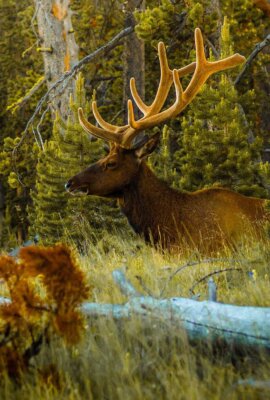Your full Wanderlust guide to
Ireland

Ireland is often described in stereotypes: Ireland is the Emerald Isle, the land of great craic, Guinness and jolly leprechauns. There’s truth in this: Ireland is well-watered (pack a raincoat) and therefore lush and green, and Irish people are generally convivial and fond of their local pub.
But there’s more to Ireland than clichés. Step away from Ireland’s main tourist hubs such as central Dublin or Blarney Castle’s infamous kissing stone and you’ll find the less slick but more authentic Ireland, as well as some breathtaking landscapes.
Heather-covered bog and rolling farmland cover much of Ireland, coupled with rocky upland (see the primordial Burren), dramatic cliffs and craggy mountain ranges, much of which is encompassed in Ireland’s six national parks. And after a hard day’s walking, kayaking, horse-riding or cycling those landscapes, you’ll have earned yourself a pint of the black stuff.
You can’t miss

Wanderlust recommends
- Soak up the literary history, and atmospheric pubs, of Dublin, Ireland’s cool capital city
- Kayak at night amid glittering bioluminescence in Europe’s only inland marine lake, Lough Hyne, Cork
- Explore the Celtic heritage and wild landscapes of the Dingle Peninsula, Kerry, by car or on horseback
- Hike up Carrantuohil (1,039m), County Kerry, Ireland’s highest peak
- Watch for whales, dolphins and more in the Shannon Estuary (April to October) and along the south-west coast (September to February)
- Surf off the beaches of Mayo and Donegal – waves are huge and consistent, if a little chilly (bring a thick wetsuit)
- Hike or cycle the small but perfectly formed Aran Islands, off Galway
When to go
Ireland’s weather can change quickly – you can have sun, wind, rain, sleet and more sun all in one day. Pack for all weathers, even in summer.
Peak season in Ireland is June-August, when summer temperatures can hit 24°C-plus. Spring (Mar-May) and autumn (Sep-Oct) offer pleasant, though even more changeable, conditions, with higher rainfall.
In winter (Nov-Feb) Ireland’s temperature lingers around freezing but there are few tourists and plenty of peat fires and cosy pubs to warm up in.
Big events worth catching in Ireland include the national saint’s knees-up on St Patrick’s Day (17 March), the unique Puck Fair (Killorglin, County Kerry; August), the amorous Lisdoonvarna Matchmaking Festival (County Clare; September) and the All-Ireland Gaelic Football Finals (October).
International airports
Dublin (DUB) 10km from Dublin; Cork Airport (ORK) 8km from Cork; Galway Airport (GWY) 6km from Galway.
Getting around
Ireland is small, so distances between attractions are short. However, public transport to more rural areas can be infrequent, with buses mainly serving the larger cities.
The train network is fairly limited, and more expensive than bus travel. It’s easiest and most flexible to hire a car – Ireland’s roads are generally good, and often very scenic, making for lovely driving.
Ferries connect the mainland with outlaying islands. The energetic should bring/hire a bike to get around Ireland – note, the prevailing winds in Ireland’s west mean it is easier to cycle from south to north.
Where to stay in Ireland
Ireland has plenty of budget accommodation, with a range of hostels, though campsites aren’t so common.
B&Bs and guesthouses proliferate in Ireland, ranging from bog-standard to extremely cute and characterful; most will offer a slap-up Irish breakfast, possibly including fried black and white pudding or delicious scrambled egg with smoked salmon.
High-end hotels are available – look out for converted manors and lodges in remote locations. For something different, hire a traditional wooden horse-drawn caravan for a slow amble around the Irish countryside.
What to eat in Ireland
Ireland’s food has developed far beyond the humble potato, though you will see plenty of spuds on the menu – as chips, in potato farls (bread), as colcannon (mash with cabbage).
Ireland’s meat is particularly good, with all that green grass nurturing excellent beef, lamb and pork. Seafood is excellent in Ireland: try the trout, oysters and salmon – the latter, served smoked on fresh Irish soda bread, is worth the trip alone.
Vegetarians and vegans will struggle outside Ireland’s main cities – meat and dairy are staples here. Look out for breads and boxty (potato pancakes). Veggies can try Ireland’s tasty cheeses.
Ireland is famed for its drinking culture; they say the Guinness in Ireland tastes better here than anywhere else in the world. The black stuff will be available in pubs countrywide, as well as plenty more locally brewed stouts and ales, Irish whiskies and Irish coffee (coffee with cream and whiskey).
Health & safety
There are no specific health issues for travellers to Ireland.
Water is safe to drink.
Be prepared if you are heading out into the countryside – make sure someone knows where you’re going, and that you have suitable clothing/provisions in case the weather changes or you get stuck.
















